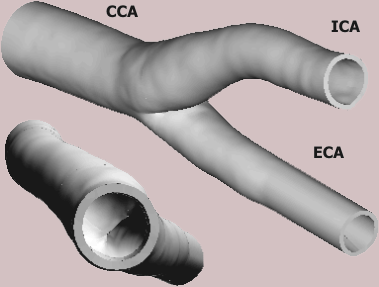
In recent years implantable rotary blood pumps (RBP) have been implanted in a considerable number of patients with terminal cardiac failure for bridge to transplantation and even for destination therapy. These pumps provide continuous blood flow resulting in lower pulsatility of flow and pressure than in normal circulation.
This influences the flow and shear stress patterns with potential influence on washout and subsequent plaque growth.
Corresponding clinical question: Is there an increase in complications in the vascular bed.
Flow dynamical and corresponding physiological consequences of reduced flow pulsatility will be discussed.
Computational geometric models
Model surface: measured data smoothed using weighted least squares B-splines
NORMAL ARTERY (Model slightly non-planar branching)

DISEASED ARTERY (Atherosclerotic plaque in the c. sinus)
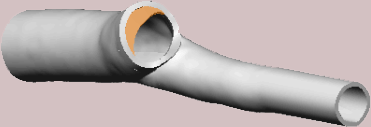
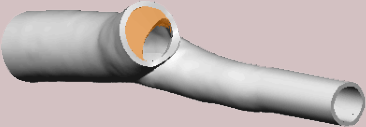
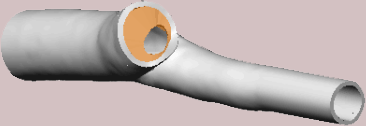
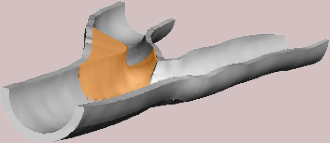
Inflow pulse wave forms, various degrees of support with RBP (various levels of pulsatility)
Mean inflow rate 5.5 ml/s
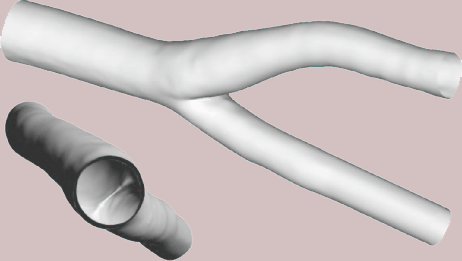 | 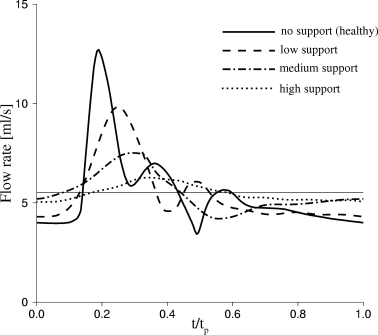 |
Axial velocity contours, in-plane velocity vector field, flow separation zone
Pulse phase angle corresponds to the largest extent of the separation/recirculation zone
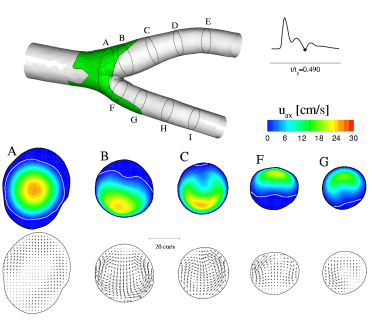 |  |
Secondary flow field leads to spiral streamlines
at the outer common-internal carotid wall at four levels of support
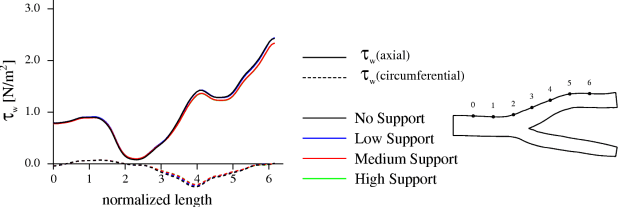
Time-averaged local WSS are practically identical !
The carotid artery bifurcation (also steep branching of the mesenteric a. and renal a. from the abdominal aorta) is considered to be crucial for flow dissection, areas of recirculation and low WSS. Studies showed the correlation of flow disturbances (particle deposition) subsequent arteriosclerosis and intimal hyperplasia. Carotid bifurcation: flow recirculation (time-dependent) was particularly shown for the carotid sinus.
We suspected therefore that such recirculation eddies could persist under continuous flow conditions, and increase massively the risk of deposition and plaque growth.
The results demonstrates: